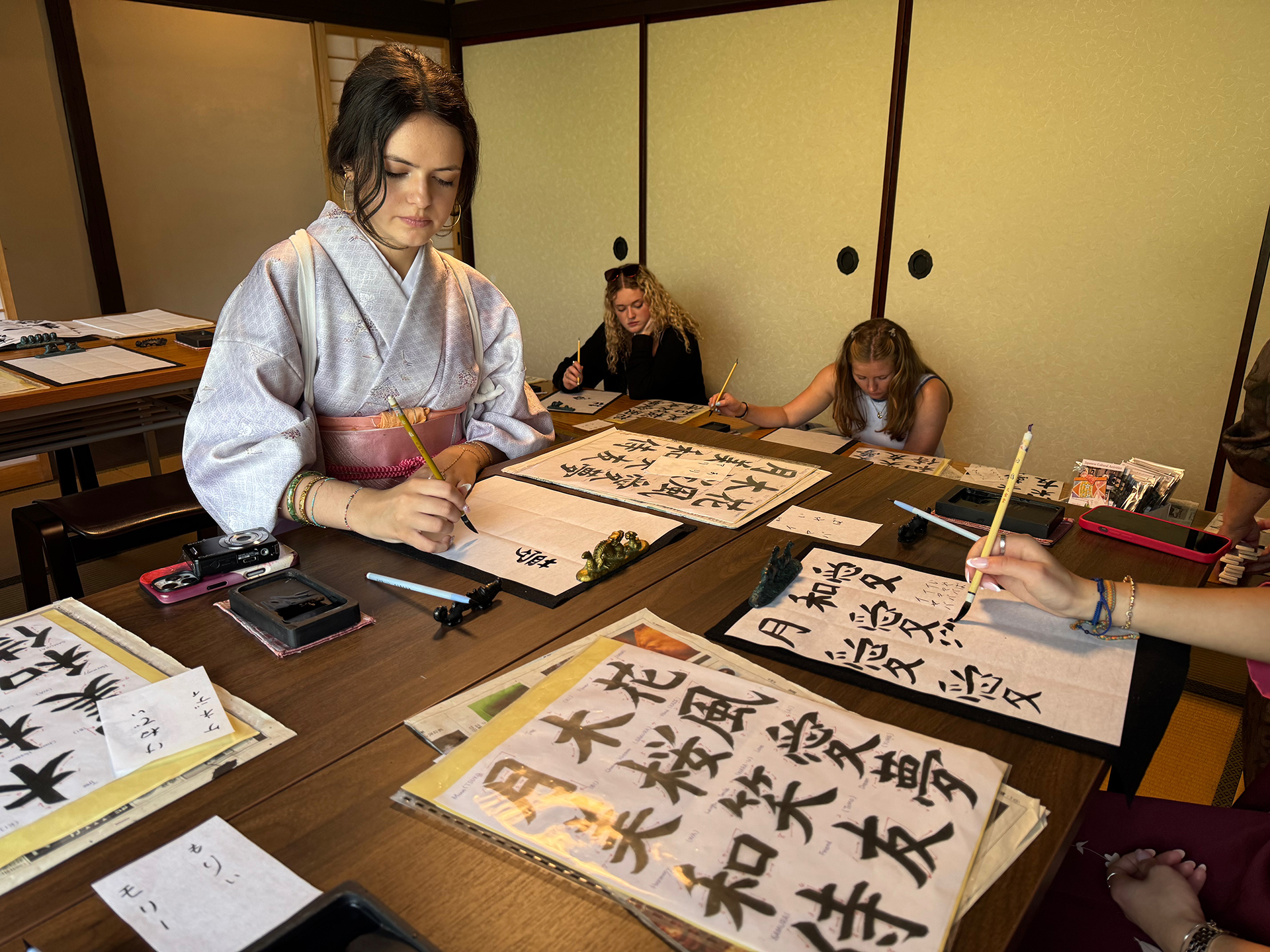Oxford's Global Learning Program: Japan

A group of Oxford students had the rare opportunity to explore how a nation remembers tragedy and advocates for peace when they traveled to Hiroshima, Nagasaki, Tokyo, Kyoto, and Osaka as part of Oxford's Global Learning Program.
This semester-long class, paired with a two-week study abroad experience led by Professor Molly McGehee 03G 07PhD and curated by Dr. Maren Adams, took students directly from the classroom to various historical sites, allowing them to engage with local Japanese culture. Throughout the semester leading up to their abroad experience, students focused on "collective memory and national identity, the ways that Japanese governments and Japanese citizens have remembered that tragic episode of their history, and the peace movement that came about," explains McGehee.
Through a series of readings and articles, students explored how historical narratives are passed down across generations and how these differ from the narratives commonly presented in museums.

While the pre-departure readings and lectures provided valuable context, it was the daily rhythm of the program that effectively intertwined those in-class lessons with the experiences they had when they arrived in Japan. Each day paired deep historical academic structuring with cultural immersion. "Typically, we would all take the public transit together and have one person designated as the GPS person, so they had the opportunity to traverse Japan, use Google maps, and try to figure out what train or bus to take," says Kola-Ogunbule. "Then we would go to our first event, which may be a museum or shrine, particularly in Hiroshima and Nagasaki. We went to the museums, met up with the hibakusha, and listened to their testimony. And after that, we either went to a different museum or shrine, or we just decided to go around together as a group and walk around the city." This structure enabled students to immediately apply what they were learning both in the classroom and in the community as they visited different cities.
For many students, this trip was their first encounter with everyday life in Japan, and no amount of preparation and planning could fully prepare them for what it felt like to step into a culture so different from their own. "I think there may have been some initial shock, but overall, I believe students felt very comfortable from the start. Japan has done so much in recent years to welcome tourists, including providing a significant amount of signage in English," says McGehee. “Additionally, students know a great deal about Japan from social media, especially from TikTok. In fact, they taught me about trends and pop culture while we were there together.”

"Bringing students into closer proximity to what they've learned about is so important," says McGehee. "For some of the students, it was the first time for them on a plane or even out of the country." Stepping off the plane into a place they'd only read about in the classroom connected the classroom to the real world in a powerful way. It wasn't just being in the country that left a lasting impact on students; it was the intentional reflection that helped them process, question, and internalize what they were experiencing.
After all, reflection was a core part of this experiential learning experience. McGehee was intentional in the way she helped students think critically about what they were experiencing in real time in each of the cities they visited. By discussing how these different museums made them feel and asking about their reactions to various cultural norms, as well as engaging in conversations with small groups of students, they were able to absorb the experience more deeply. Two final requirements for the course were a memory book and an analytical reflective essay. The memory book required students to provide McGehee with 20 or more pictures and captions reflecting on their experience, what it meant to them, and its significance within the context of the course.
For students, Oxford's global learning experience to Japan was a balance between structure and independence. The program offered a well-paced itinerary that exposed students to key historical and cultural sites early in the trip, while also building in unstructured time later for personal exploration. As Kola-Ogunbule reflected, "With the Oxford travel component, you were able to have a good itinerary; we hit the key points. Later on, we had free days to explore on our own. But that made me realize I didn't really know what I wanted to do in Japan, except for shopping. I would've missed out on a lot more if I hadn't had that structure beforehand." The carefully planned engagement on the ground allowed students to explore Japan not just as visitors, but as learners prepared to engage meaningfully with what they found.
This Oxford Global Learning experience was more than just a journey across the world; it was a carefully crafted opportunity to see history, culture, and identity through a new lens.





